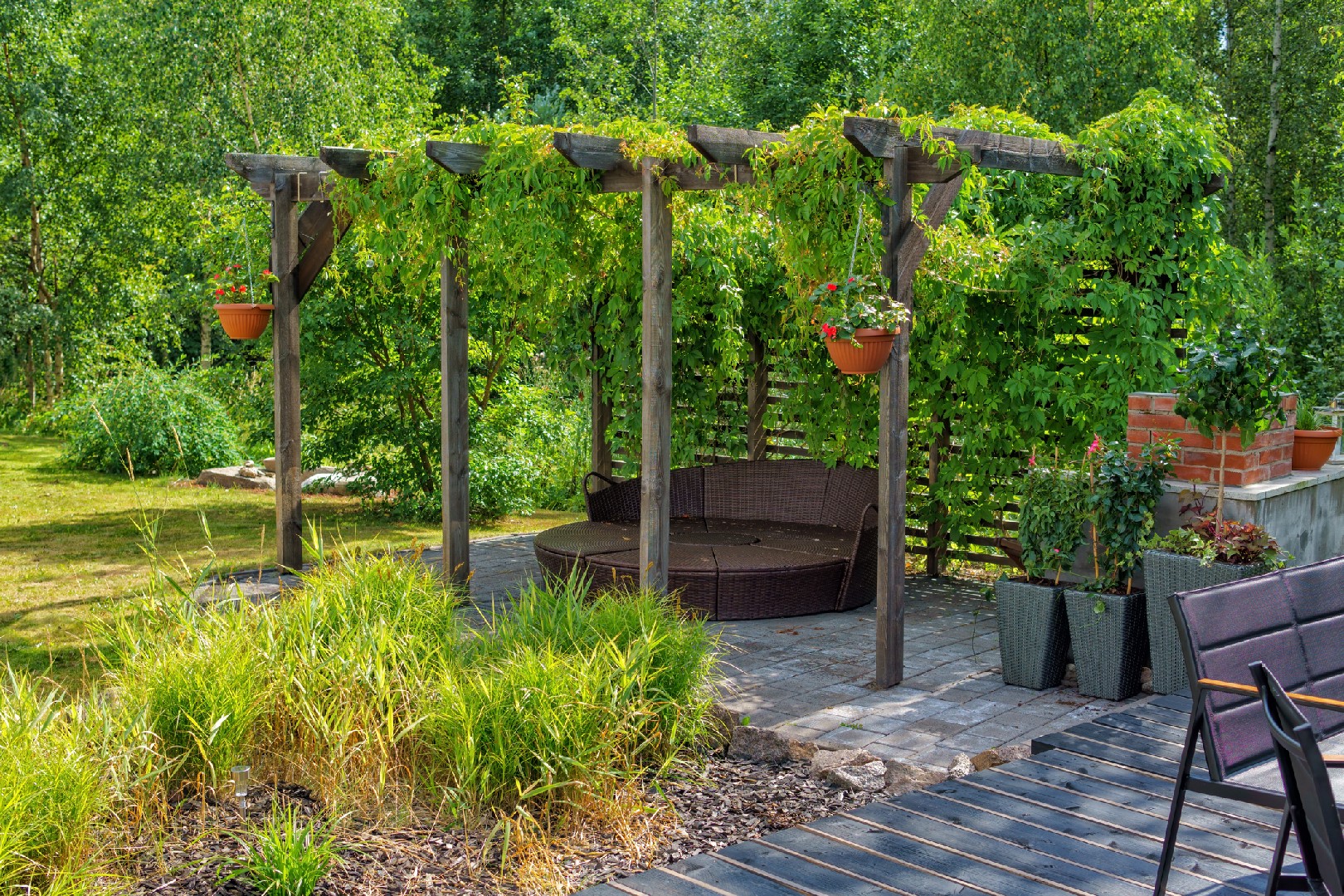![Rectangle]()
Overhead Structures: The Vertically Endowed
When it comes to urban gardening, utilizing all available space is crucial. That's where overhead structures come in. These innovative additions can transform empty air into vibrant green spaces, adding a touch of beauty and functionality to any urban environment.
There are several types of overhead structures that are perfect for urban gardening. Pergolas, archways, trellises, and hanging planters are a few popular options to consider. Each structure offers unique advantages and can be tailored to fit various spaces and plant types.
Pergolas are sturdy and elegant structures that provide shade and a framework for climbing plants. With their open-roof design, they allow sunlight to filter through while creating a cozy and intimate atmosphere. Perfect for larger outdoor areas, pergolas can be used to create seating areas or walkways adorned with beautiful vines and flowers.
Archways are similar to pergolas but have a curved roof, adding an enchanting element to any garden design. They can be strategically placed to create an inviting entrance or a stunning focal point. Imagine walking through a magical archway covered in blooming roses or fragrant jasmine—truly a sight to behold!
Trellises are versatile and practical overhead structures that are often used to support climbing plants such as tomatoes, cucumbers, and beans. They can be mounted on walls or fences, making them suitable for even the smallest urban gardens. Trellises come in a variety of designs, from simple wire frameworks to ornate wooden structures, allowing you to find one that matches your aesthetic preferences.
Hanging planters offer a unique way to maximize vertical space in urban environments. They can be suspended from pergolas, archways, or even existing structures like balconies and eaves. By planting a variety of trailing plants, such as ivy, petunias, or ferns, you can create a stunning display that not only beautifies your surroundings but also provides shade and privacy.
Choosing the right overhead structure depends on several factors. First, consider the available space you have. If you have a large backyard or rooftop, a pergola or archway would be a great choice. For smaller spaces, trellises or hanging planters may be more suitable. Second, think about the types of plants you want to grow. Some plants, like tomatoes or grapes, require a sturdy structure like a trellis to support their growth. Finally, consider the aesthetic appeal of each structure and how it fits into your overall garden design.
While installing overhead garden structures is a great way to beautify your urban space, safety precautions should not be overlooked. Make sure to choose high-quality materials that can withstand environmental conditions. If you're not confident in your DIY skills, it's best to hire a professional to ensure proper installation. Additionally, regularly inspect the integrity of the structures to prevent any accidents or damage.
In conclusion, overhead structures offer an innovative and visually appealing way to maximize urban gardening space. Whether you choose a pergola, archway, trellis, or hanging planter, these structures not only beautify your surroundings but also provide practical benefits like shade, support for climbing plants, and privacy. Just remember to consider the available space, plant selection, and safety considerations when installing overhead garden structures. With the right combination, you can transform any overhead space into a lush oasis that enhances the beauty and functionality of your urban garden.





